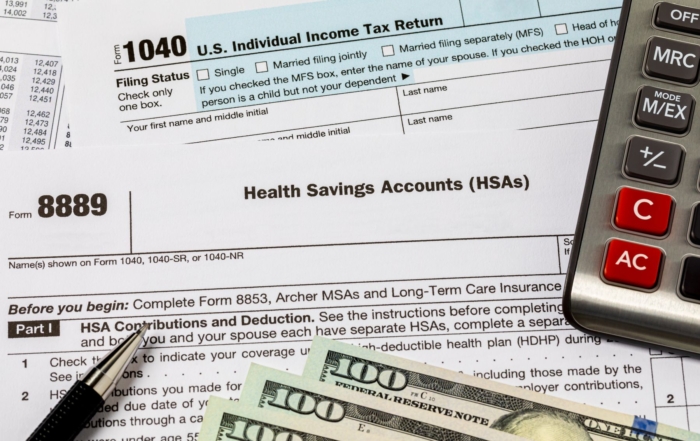The CARES Act and subsequent COVID-19 legislation created and enhanced the Employee Retention Credit (ERC) as a means of incentivizing employers to keep employees on payroll despite operational challenges. As a result, many employers have already claimed millions of dollars in tax credits through the ERC. Those employers that have not yet claimed any ERC may still do so retroactively by filing amended payroll tax returns for tax years 2020 and 2021.
Eligible employers can claim their tax credits if they have a small or mid-sized business. The credit is based on qualified wages and healthcare paid to employees.
CARES Act 2020:
When the CARES Act passed, it meant that eligible businesses could receive a credit equal to 50% of qualified wages paid per employee. This would allow businesses to claim up to $10,000 annually for each employee based on wages paid between March 13th and December 31st of 2020.
Consolidated Appropriations Act 2021:
The Consolidated Appropriations Act of 2021 made it possible for eligible employers to claim a 70% credit on qualified wages paid to employees. Qualified wages for the ERTC credit were also raised to $10,000 per quarter for each employee.
American Rescue Plan Act – 2021
When the American Rescue Plan Act was passed, it kept the maximum credit at $7,000 per quarter for each employee. Employers may claim this credit for each employee through the first three quarters of 2021. One big change is that startup businesses may be able to receive credits of $50,000 for the third and fourth quarters of 2021.
What are the ERTC Qualifications?
The ERTC can be a big help for businesses, but there are certain qualifications that businesses must meet in order to be eligible. Let’s take a look at what they are…
Company Qualifications
An eligible employer is a business that has 500 or fewer full-time equivalent employees, was forced to suspend or reduce operations due to COVID-19, or experienced a significant decline in gross receipts. A recovery startup business, which is one that began after February 15, 2020, may also qualify depending on its gross receipts.
Employee Qualifications
For an employee to qualify, they must have been employed by the eligible employer at any time during 2020 or 2021. The credit is available for qualified wages and healthcare benefits paid to employees after March 12th, 2020, and before January 1st, 2022. In order to receive the credit for healthcare benefits, an employer must pay health insurance premiums for their employees.
Company Size
The size of your business will play a role in whether or not you’re eligible for the ERTC. To qualify, your business must have 500 or fewer full-time equivalent employees. This means that if you have part-time employees, you’ll need to do a bit of math to figure out your full-time equivalent number.
Qualified Wages Paid
As mentioned above, qualifying wages are employee wages paid after March 12th, 2020, and before January 1st, 2022. Total qualified wages paid by an eligible employer are capped at $10,000 per employee per quarter. This means that the maximum credit an employer can receive is $7,000 per employee per quarter.
How to Calculate Your Credit
To calculate your credit, you’ll need to figure out your full-time equivalent employees and your qualified wages. Once you have those numbers, you can use the following formula:
Full-time equivalent employees x Qualified wages paid per employee x Credit percentage = Maximum credit amount
Is Employee Retention Tax Credit Taxable?
The good news is that the ERTC is not taxable. This means that you won’t have to pay any taxes on the credit, and you can use it to offset your payroll taxes. This can be a huge help for businesses that are struggling to make ends meet.
How to Apply for ERTC
If you think your business is eligible for the ERTC, follow the following steps:
- Check qualifications. Before applying, make sure your business and employees meet the requirements as outlined on the IRS website. Recovery startup businesses have a maximum credit of $50,000 per calendar quarter.
- Gather the necessary documentation. This includes your most recent tax return, W-2 forms, and payroll statements.
- Calculate your credit. Use the formula above to figure out how much credit you’re eligible for. Make sure to keep track of your full-time equivalent employees and qualified wages paid.
- Apply for the credit. You can apply for the ERTC by filing Form 7200 with the IRS to receive these advance payments.
- Receive your credit. Once you’ve filed your return, you’ll receive your credit in the form of a refundable payroll tax credit.
Don’t Miss the Retention Tax Credit ERTC Deadline!
If your business operations were impacted by COVID-19, you may be eligible for the Employee Retention Tax Credit. For all qualified wages paid in 2020, the deadline to claim the ERTC is April 15, 2024, while the deadline is April 15, 2025, for all qualified wages paid in 2021.
Are PPP and ERTC Mutually Exclusive?
No, a Paycheck Protection Program or PPP loan and Employee Retention Tax Credits are two separate programs, and businesses can apply for both. However, there are some restrictions when it comes to using the two programs together.
First, businesses can only use PPP funds for payroll costs, and they can only use ERTC for wages paid AFTER the PPP loan was received. So you can’t use both to pay the same wages.
And second, businesses can’t use PPP funds to pay for health insurance premiums. This is because the ERTC only applies to health insurance premiums paid by the employer.
Are Employee Retention Tax Credit and Employee Retention Credit The Same?
Yes, the Employee Retention Tax Credit and the Employee Retention Credit are the same things. They are just two different ways to describe the same tax credit offered by the IRS for those businesses negatively impacted by the COVID-19 pandemic.
How long does it take to get ERTC?
The IRS first estimated that Employee Retention Credit refunds would take anywhere from six weeks to six months to process due to revised payroll reports being filed. However, businesses can now expect a turnaround time of nine to twelve months.
Please also contact your NARFA Trust Representative for assistance with the ERTC and other related legislation.
Recent Posts
Poison Ivy, Oak & Sumac Safety Guide for Landscaping, Construction, and Outdoor Workers
Why Construction and Outdoor Workers Need to Know About Poison Plants The CDC reports that 80-90% of adults develop rashes from poison ivy exposure, and [...]
Multi-State Business Operations: Insurance and Compliance Strategies for Growing New Hampshire Auto Companies
Picture a successful New Hampshire automotive dealership that starts with a single location in Manchester. Over time, they expand their service territory, hire employees who [...]
Revolutionary HSA Changes in the 2025 Budget Bill: Your Complete Guide to Expanded Benefits
Introduction: A Game-Changer for Healthcare Financial Planning The 2025 federal budget reconciliation bill, recently passed by the House, introduces the most significant expansions to Health [...]




